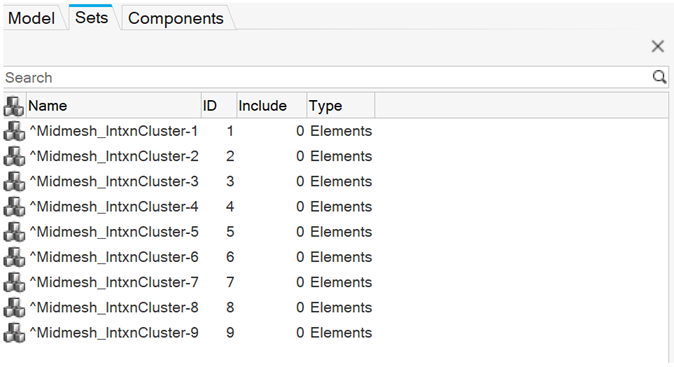Repair Midmesh Elements or Fill Faces
Use the Midmesh: Repair/Fill tool to repair midmesh by attempting to fix topological problems (holes/gaps/cracks, intersections, slivers, overlaps) in the mesh and remesh the face, or create a mesh within a closed topology loop, attempting to keep tangency.
Note: 1D topology and free edges are considered for loop completion.
-
From the 2D ribbon, click the tool.
Figure 1. 
-
Select elements on midmesh faces or edges to repair.
- Select 2D face elements to repair a face.
- Select edge(s) to ignore gap edges.
- Select edge(s) to fill a missing face.
- Optional:
On the guide bar, click
 and check the box to
suppress edges on fill.
Suppress edges on fill does not keep shared edges between new surfaces and existing surfaces within the defined feature angle.
and check the box to
suppress edges on fill.
Suppress edges on fill does not keep shared edges between new surfaces and existing surfaces within the defined feature angle. -
Find intersecting element clusters and holes/gaps/cracks, and create element
sets for further handling.
-
Repair midmesh in the following ways:
- On the guide bar, click
 .
. - In the microdialog, click Repair Face or Ignore Gap.
Note:- Intersection element clusters sets cleared are removed upon repairing faces.
- Ignore gap will just unmark the gap edges label for selected gap edges.
- On the guide bar, click
-
To fill missing faces:
- Select edge(s) to identify the loop to be filled.
-
Click
 on the guide bar or Fill Face in the
microdialog.
on the guide bar or Fill Face in the
microdialog.

 /
/ . Intersecting elements are automatically
appended to the Elements selector for repair.
. Intersecting elements are automatically
appended to the Elements selector for repair. /
/ respectively.
respectively.